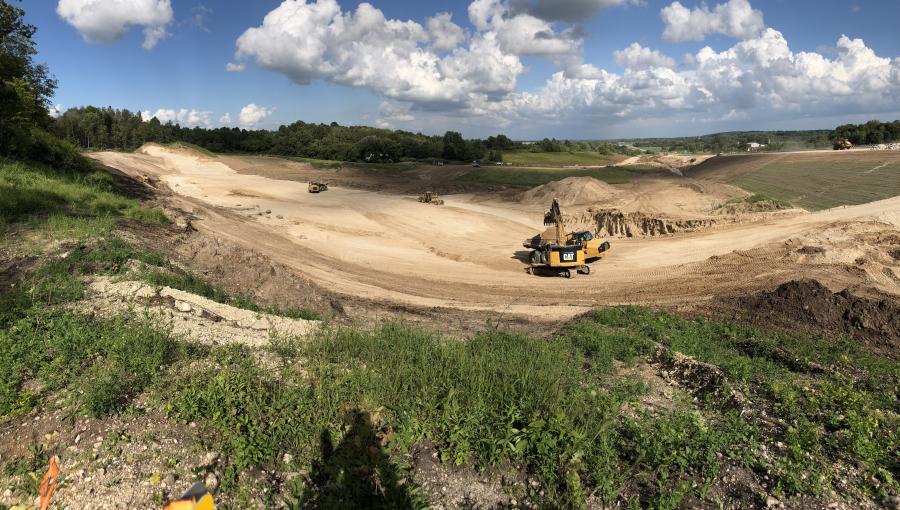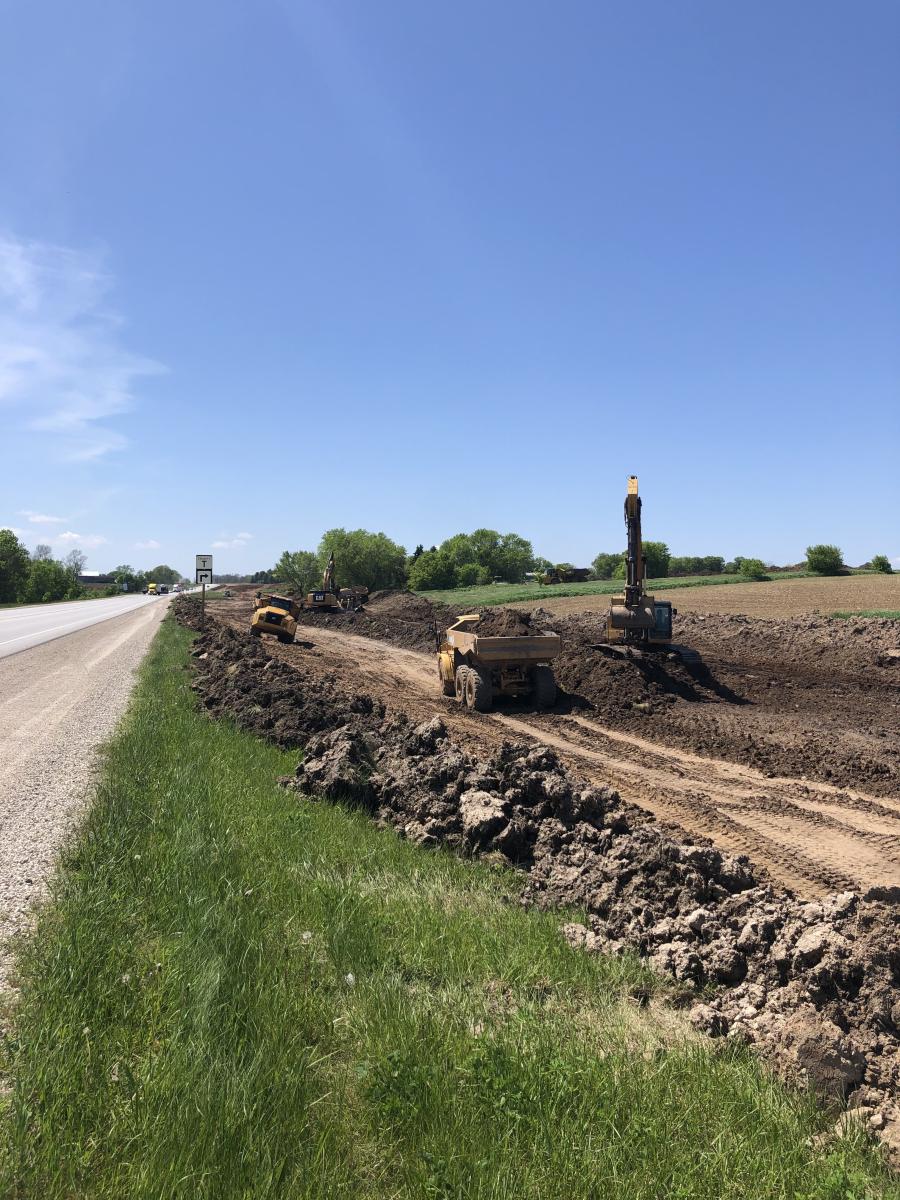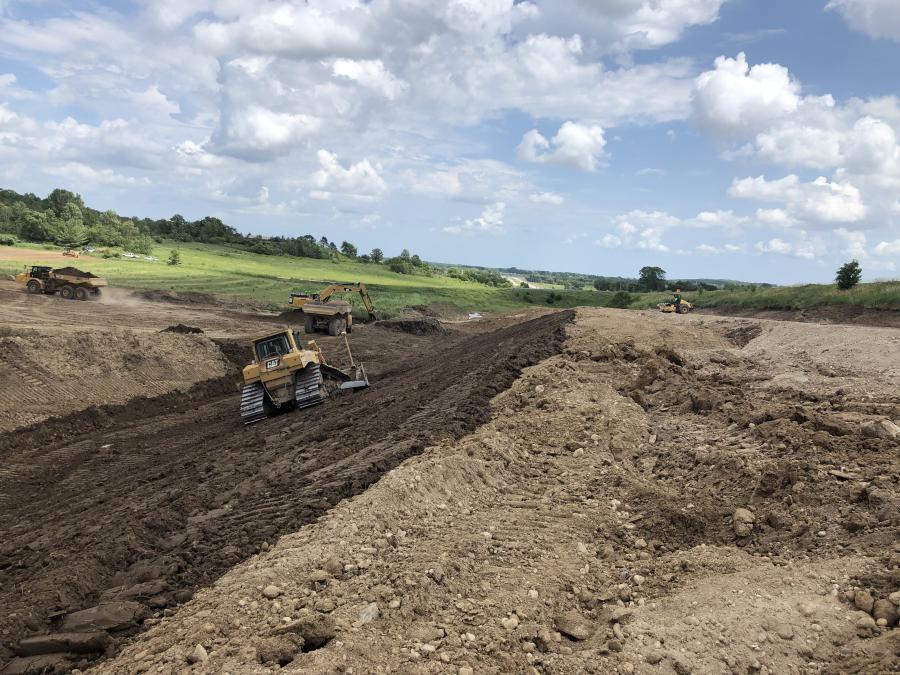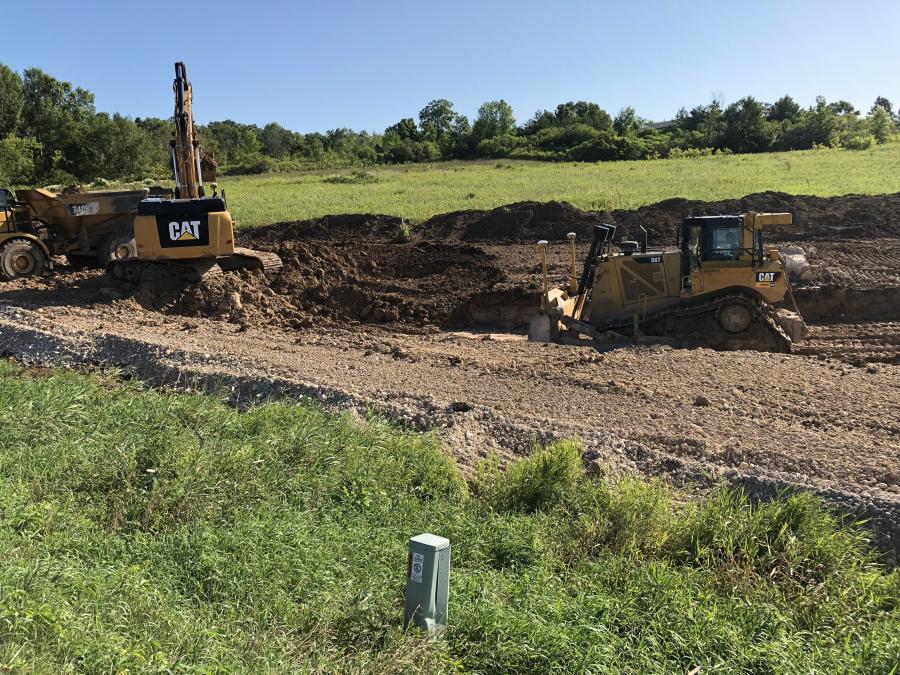The Wisconsin Department of Transportation’s WIS 23 Expansion, a considerable investment that covers the highway from Plymouth to Fond du Lac is divided into three sections — two rural and one urban — and last May, Relyco Inc. began construction on the first rural section.
(Relyco Inc. photo)
The Wisconsin Department of Transportation's (WisDOT) WIS 23 Expansion, a considerable investment that covers the highway from Plymouth to Fond du Lac, is divided into three sections — two rural and one urban — and last May, Relyco Inc. began construction on the first rural section.
The project — funded by state and federal dollars — occurring in Sheboygan and Fond du Lac counties will construct 19.1 mi. of two additional lanes, making WIS 23 a four-lane, on-alignment divided highway from U.S. 151 in Fond du Lac east to County P in Plymouth and improve numerous intersections.
The work, split into three segments, will finish in 2022. The first section, 2019-21, is in Sheboygan County (2019-21). The second, 2020-21, also rural, is in Fond du Lac County and covers the area from Seven Hills Road to Division Road. The work will focus on grading, structure and paving construction for the added lanes, intersections and the County G interchange. The third section, the urban element (2021-22), is occurring in Fond du Lac and covers the area from U.S. 151 to Seven Hills Road. The work will be similar, along with focuses on the County K jug handle intersection, County UU interchange and resurfacing of existing lanes.
The project, in the planning stage since 2001, is much desired by the community.
"It will provide a safe and dependable highway connection to and from regional communities while reducing conflicts between local and through traffic," said Mark Kantola, WisDOT's Northeast regional communication manager. "It also will improve the highway to meet current design standards for this connector route, complete the system link of U.S. 41 to I-43 between the cities of Fond du Lac and Sheboygan, improve safety at intersections and farm crossings, increase corridor mobility and minimize public and private access, preserve the corridor for future transportation use by coordinating local governmental land use plans, alleviate development pressures on WIS 23 and intersecting roads, and maintain a rural highway-type facility while addressing the increased traffic needs of the expanding urban area."

WisDOT designed the new road infrastructure that is expected to carry considerably more traffic, particularly trucks hauling freight. With proper maintenance, the new concrete pavement sections may have a lifespan of between 30 and 50 years.
"A new four-lane divided highway will prevent head-on crashes from passing vehicles," said Kantola. "Improved intersections will provide safer crossings."
In terms of unique materials being used, pit run and foundry sand are being employed.
"Portions of the project have 16 inches of pit run with geogrid and geotextile fabric," said Kantola. "We design all projects for the hauling weight that is allowed."
Relyco's $12.3 million contract is for the grading of 7.42 mi. — West Sheboygan/Fond du Lac County line to County P west of the city of Plymouth. The 2019 construction work focused on grading operations, which will continue to mid-2020 and the installation of box culverts and inlets and construction of a bridge that were completed in 2019. Paving operations for the new lanes will take place during the 2020 and 2021 construction seasons.
The contract also includes a westbound box culvert extension at the Mullet River; an eastbound and westbound bridge over the Ice Age Trail; creating a wetland mitigation site; and extending an existing box culvert system.
"The number one challenge is the weather," said Tom Teske, Relyco's project manager and a co-owner of the company. "We had about 19 inches more than the average rainfall this past year and it's hard to get the clay to dry out.
"We had two or three crews of off-road trucks pitching in," said Teske. "You have your bigger cuts and bigger fills — it's all a question of moving dirt. We're doing okay for the amount of rain we had this year and the amount of rain days, and we're further along than I thought we would be under those circumstances. The dirt had to be dried out, so you need big areas to put a down a lift/layer of fill and disc it to dry it out until its dry enough to be compacted — that is when they do the moisture and density testing to make sure it meets the specifications. Then you can put another lift on."
Progress on average days saw 7,000 to 8,000 yds. graded and all material being excavated is being re-used.
"We're importing material from off-site borrow pits on adjacent properties — about 350,000 to 400,000 yards of fill," said Teske.
The new road will have a 6-in. base aggregate and 9-in. concrete surface.
"This job also has a subgrade improvement portion due to the marginal soils in the area and they tend to get very wet," said Teske. "The DOT is going to excavate down about 16 inches and put in a pit run with sandy, rocky materials to make sure there is a good, hard subgrade before the basecourse is placed to have a uniform substructure."
The existing 160-ft. long box culvert was extended northwards by 160 ft. underneath the highway, which was completed last November.
"Because of the high-water levels, it took closer to eight weeks instead of the five weeks that it should have," said Teske. "The crews had to deal with a lot of rain, and it involved a lot of water pumping and they had to bypass the Mullet Creek."
The 80-ft. long, two-lane bridge was completed last June.
"They put in the pilings and poured the abutments and the beams were short," said Teske. "The work, which took approximately four weeks, proceeded smoothly."
Assisting on the project are Gus Pfeiffer, superintendent; Travis May, foreman; and Brad Ottum, Relyco's majority owner.
"Gus and Travis both bring a long history of grading experience — about 50 years' worth and Brad's in the office dealing with any changes and helping us take care of the subcontractors," said Teske.
Peak days saw between 35 and 40 Relyco and subcontractor employees on-site. The subcontractors are: Buteyn Peterson Construction for grading; Lunda Construction for structures; Interstate Tree Service for clearing and grubbing; Storm Companies for traffic control; Wisconsin Interstate Contracting for landscaping and erosion control; Wisconsin Land Surveyors for staking and survey; Northeast Asphalt for asphalt; and Martell for concrete curb and gutter.
New materials will include nearly 1,020 cu. yds. of structural concrete; 128,000 lbs. of steel; and 12,000 linear ft. of piping.
The majority of Relyco's fleet consists of Caterpillar equipment, and it also owns John Deere dozers, tractors and disks. On this project it is using: Cat 349, 336 and 323 excavators; Cat D6, D8 and D5s and John Deere 650 and 550 dozers; Case 621 and 821s and a John Deere 624 front-end loader; a John Deere 8840 tractor; and two Rome disks.
"Maintaining our equipment is a priority, especially as machines get older" said Teske. "We had very few issues with the equipment and spend money on maintenance to ensure that. The Case loaders have been very good to us, not needing much maintenance.
"We subscribe to the Cat maintenance program where you turn in your oil samples," said Task. "Whenever you get high copper, steel and other metals, they notify you. Cat mechanics also come out to do 1,000-hour services on machines. We also talk to our operators who keep a close eye on the machines. Whenever we hear or see something that might be an issue, we check it out and repair it if necessary, to ensure the machine lasts as long as possible."
An on-site mechanic was present at all times.
Relyco purchases its Cat Equipment from Fabick CAT in Green Bay and its John Deere equipment from Brooks Tractor Inc. in De Pere. It rented four Cat off-road trucks from Fabick; a John Deere and a Hitachi excavator from Brooks; and a roller from Miller Bradford and Risberg Inc. in De Pere.
"It's important for the dealerships to handle our issues, get us spare parts and do repairs as soon as possible," said Teske. "They also need to give us the full information on every machine that we buy so we know when it's best to do service intervals, help us diagnose and determine what the problems are in terms of repairs and how to prevent them in the future, and keep us up to speed on the latest technologies." CEG
Irwin Rapoport
A journalist who started his career at a weekly community newspaper, Irwin Rapoport has written about construction and architecture for more than 15 years, as well as a variety of other subjects, such as recycling, environmental issues, business supply chains, property development, pulp and paper, agriculture, solar power and energy, and education. Getting the story right and illustrating the hard work and professionalism that goes into completing road, bridge, and building projects is important to him. A key element of his construction articles is to provide readers with an opportunity to see how general contractors and departments of transportation complete their projects and address challenges so that lessons learned can be shared with a wider audience.
Rapoport has a BA in History and a Minor in Political Science from Concordia University. His hobbies include hiking, birding, cycling, reading, going to concerts and plays, hanging out with friends and family, and architecture. He is keen to one day write an MA thesis on military and economic planning by the Great Powers prior to the start of the First World War.
Read more from Irwin Rapoport here.
Today's top stories






















